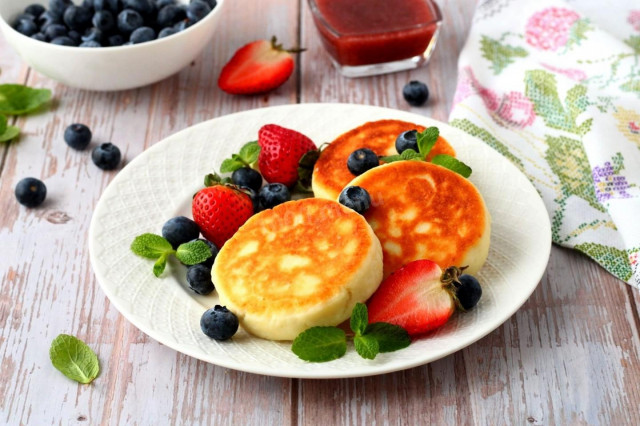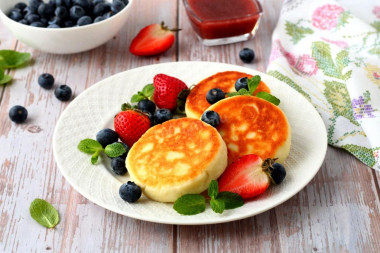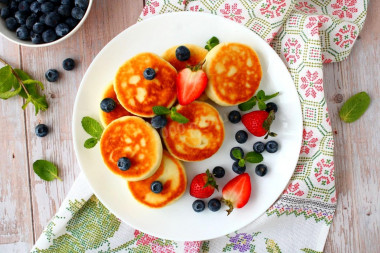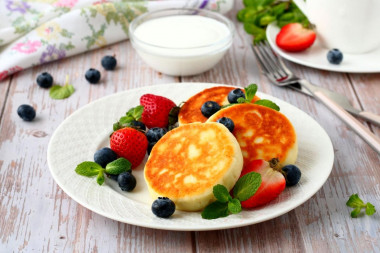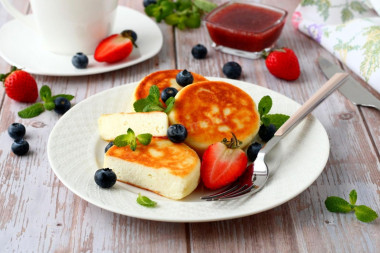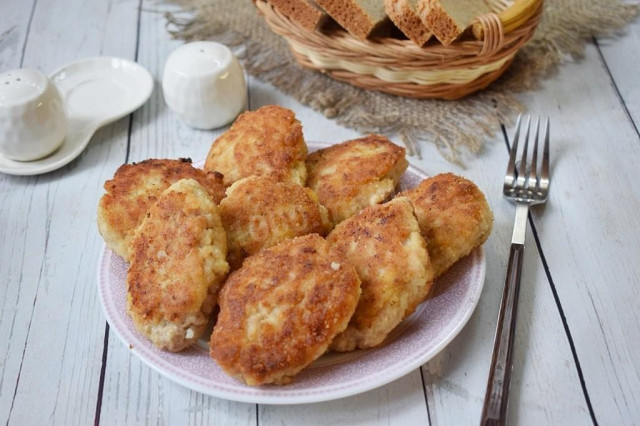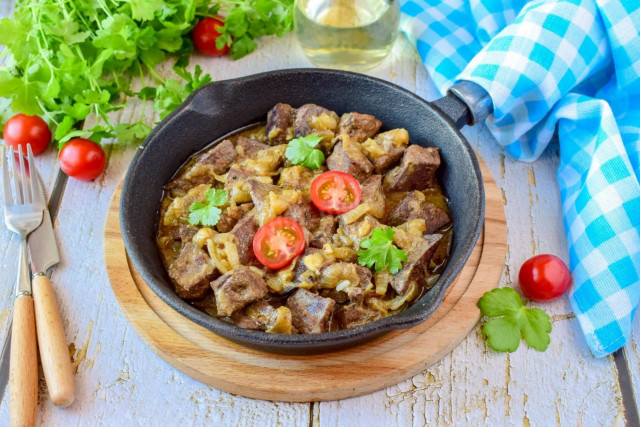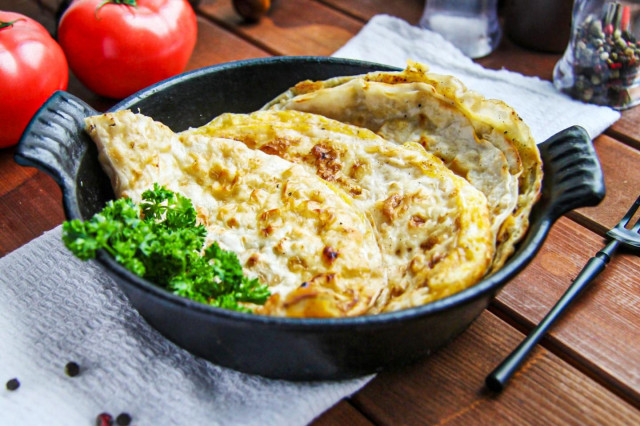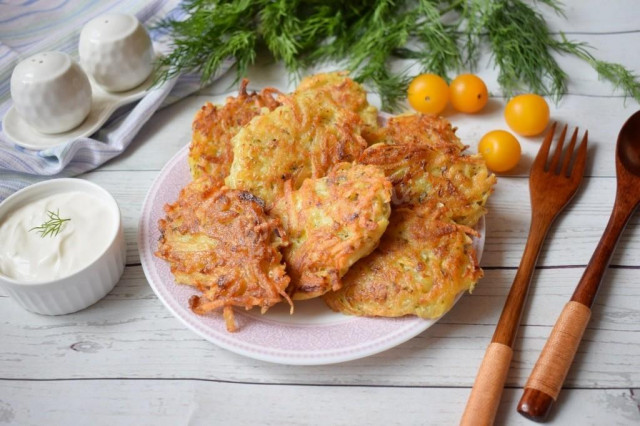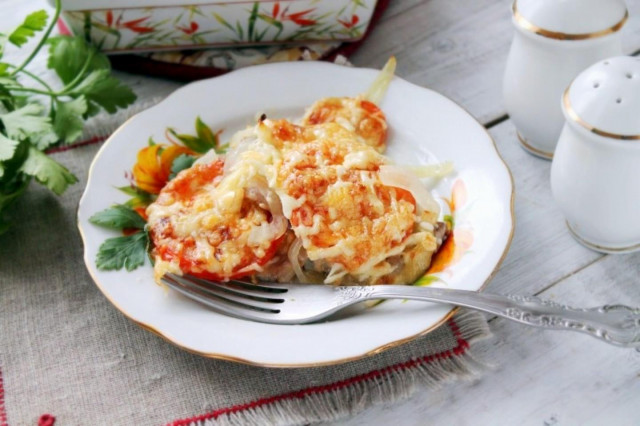Composition / ingredients
Step-by-step cooking
Step 1:
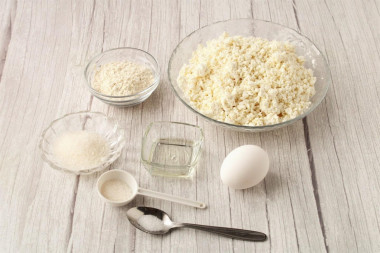
How to make cheese cakes from cottage cheese in a frying pan? Measure out the necessary ingredients. Cottage cheese is suitable for any fat content. Vanilla sugar can be replaced with vanillin.
Step 2:
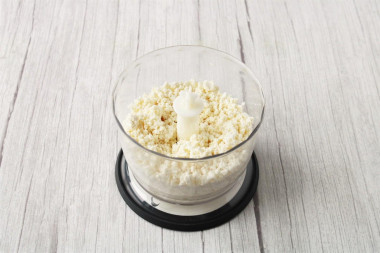
It is very important to choose the right cottage cheese. It should not be wet. Otherwise, you will have to add an excessive amount of flour, which will make the dough tight and dense. For the same reason, you should not use soft, pasty cottage cheese. This is not suitable for cheesecakes. If the cottage cheese is coarse or flakes, pass it through a blender to get a homogeneous structure. Then the cheesecakes will turn out tender. You can take cottage cheese in briquettes.
Step 3:
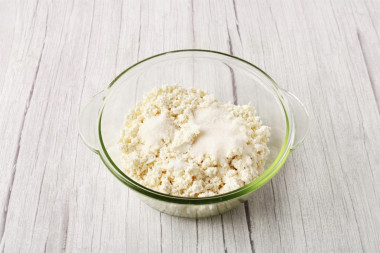
Put the cottage cheese in a suitable sized bowl. Add salt, sugar, vanilla sugar, mix. Take the amount of sugar to taste.
Step 4:
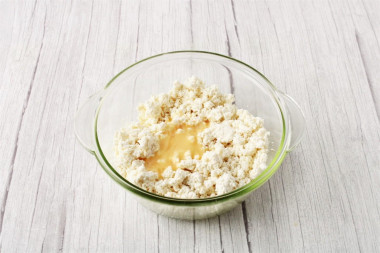
Add the beaten egg to the cottage cheese, mix well.
Step 5:
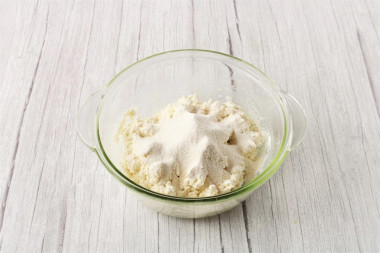
Pour flour through a sieve, mix thoroughly. If the dough turns out to be too viscous, add quite a bit more flour (0.5 tbsp, no more).
Step 6:

Leave the curd dough on the table for 15 minutes. The gluten in the flour will disperse, and the cheesecakes will be easier to form.
Step 7:
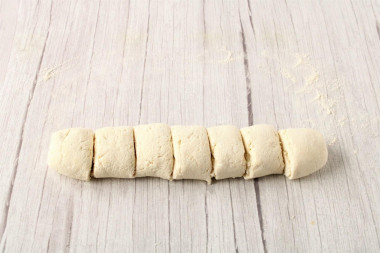
Sprinkle a little flour on the table, roll the sausage out of the dough. Divide the dough into equal parts depending on the desired size of the cheesecakes.
Step 8:
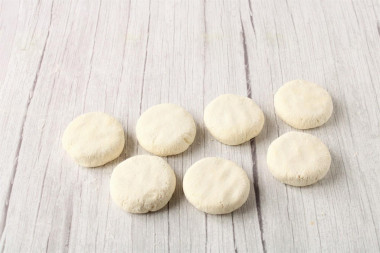
Roll each part of the dough into a bun, then press down to make a round, medium-thick cheese cake. If the dough sticks to your hands, dust them with flour.
Step 9:
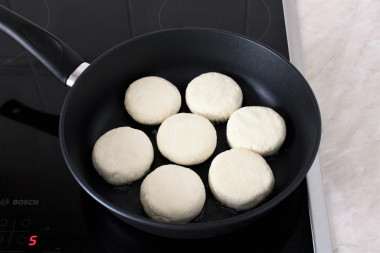
Heat the vegetable oil in a frying pan, lay out the cheesecakes. Over moderate heat, fry the cheesecakes until golden brown.
Step 10:
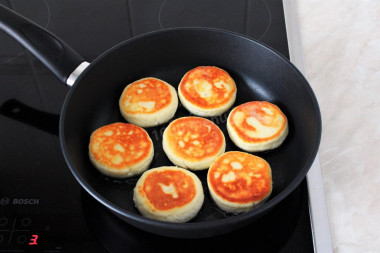
When the cheesecakes are browned, turn them over to the other side and fry until cooked over low heat.
Step 11:
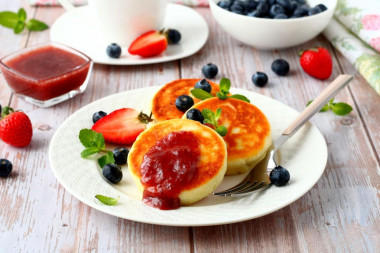
Serve cheesecakes with sour cream, any sweet additives: jam, jam, condensed milk. Enjoy your meal!
Use oil with a high smoking temperature for frying! Any oils are useful only until a certain temperature is reached - the point of smoking, at which the oil begins to burn and toxic substances, including carcinogens, are formed in it.
Unrefined oils, with rare exceptions, have a low smoking point. There are a lot of unfiltered organic particles in them, which quickly begin to burn.
Refined oils are more resistant to heating, and their smoking point is higher. If you are going to cook food in the oven, on a frying pan or grill, make sure that you use oil with a high smoking point. The most common of the oils with a high smoking point: refined varieties of sunflower, olive and grape.
You can check whether the oil has warmed up well enough in a frying pan in a simple way. Lower a wooden spatula into it. If bubbles have gathered around it, then you can start the frying process.
Caloric content of the products possible in the composition of the dish
- Chicken egg - 157 kcal/100g
- Egg white - 45 kcal/100g
- Egg powder - 542 kcal/100g
- Egg yolk - 352 kcal/100g
- Ostrich egg - 118 kcal/100g
- Cottage cheese of 40% fat content - 466 kcal/100g
- Cottage cheese of 20% fat content - 233 kcal/100g
- Cottage cheese of 18% fat content - 226 kcal/100g
- Cottage cheese of 10% fat content - 156 kcal/100g
- Low-fat cottage cheese - 75 kcal/100g
- Cottage cheese with sour cream - 260 kcal/100g
- Fruit cottage cheese - 147 kcal/100g
- Soft dietary cottage cheese - 170 kcal/100g
- Vitalinia cottage cheese - 64 kcal/100g
- Cottage cheese "morning" ( "danone") without sugar - 91 kcal/100g
- Cottage cheese - 156 kcal/100g
- Granulated sugar - 398 kcal/100g
- Sugar - 398 kcal/100g
- Vegetable oil - 873 kcal/100g
- Salt - 0 kcal/100g
- Wheat flour - 325 kcal/100g
- Vanilla sugar - 379 kcal/100g

